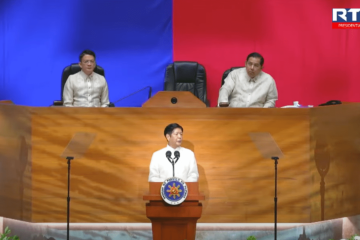
The University of Santo Tomas was still the fourth top Philippine university despite slipping overall in the 2025 Quacquarelli Symonds (QS) World University Rankings.
UST ranked 850-900 globally with an overall score of 13.8 in the latest edition of the assessment, lower than its previous bracket of 801-850.
The University of the Philippines (UP) was still the highest-ranked institution in the country with a worldwide ranking of 336th, followed by Ateneo de Manila University (516th) and De La Salle University (641-650). UST performed better than the University of San Carlos (1501+) which placed fifth among the Philippine institutions.
The institutions were ranked according to the following indicators: academic (30%) and employer (15%) reputation, faculty-student ratio (10%), citations per faculty (20%) and international student (5%) and faculty (5%) ratio.
Other indicators included international network (5%), which measures a university’s global engagement; employment outcomes (5%) or the employability of the university graduates; and sustainability (5%) which assesses an institution’s social and environmental impact.
The España campus performed best in employer reputation and international faculty where it scored 39.9 and 34.9, respectively. It obtained a score of 18.1 for international research network, 14.1 for employment outcomes, 12.8 for academic reputation and 12.5 for faculty student ratio.
International students (5.8), sustainability (2.4) and citations per faculty (1.3) were the lowest-scored indicators of the University.
‘Higher global engagement needed’
QS senior vice president Ben Sowter said Philippine universities continue to improve on academic skill and employer reputation, which he described as two “key areas for a strong higher education system.”
In this year’s edition, the country saw UP and the Ateneo De Manila enter the top 200 global ranking for the employability indicators.
“Filipino universities should look to these institutions…as benchmarks for developing industry partnerships and employment pathways, ensuring that students are prepared to enter their field with the desired skills and experiences for a thriving career,” Sowter said.
He added that with the decline in international students and faculty ratio, Philippine universities should focus on developing “enhanced international research agenda and incentivised international mobility” as measures to strengthen their global reputation.
“In international faculty ratio and international student ratio, all Filipino universities show a decline, highlighting an important area for growth if the country is to compete on the global higher education stage,” QS said.
“The University of Santo Tomas is the Philippines top performer in both metrics, placing in the world top 500 for its international faculty (459th) and 868th for international students.”
UP emerged as the best university in the country for academic reputation and sustainability, while Ateneo de Manila University topped the employment outcomes indicator. Meanwhile, De La Salle University was the country’s top performer for research collaboration and outputs.
The Massachusetts Institute of Technology emerged as the best institution globally, followed by Imperial College London; Harvard University and University of Oxford, which tied for third place; University of Cambridge; and Stanford University.
In its 21st edition, QS welcomed 21 newly-ranked institutions, totaling 1,503 entrants over 106 locations globally.
Launched in 2004, the QS World University Rankings annually presents a portfolio of comparative data that assesses the performance of universities across the globe. F




[…] READ: UST maintains 4th place but lands on a lower bracket in 2025 QS World Rankings […]